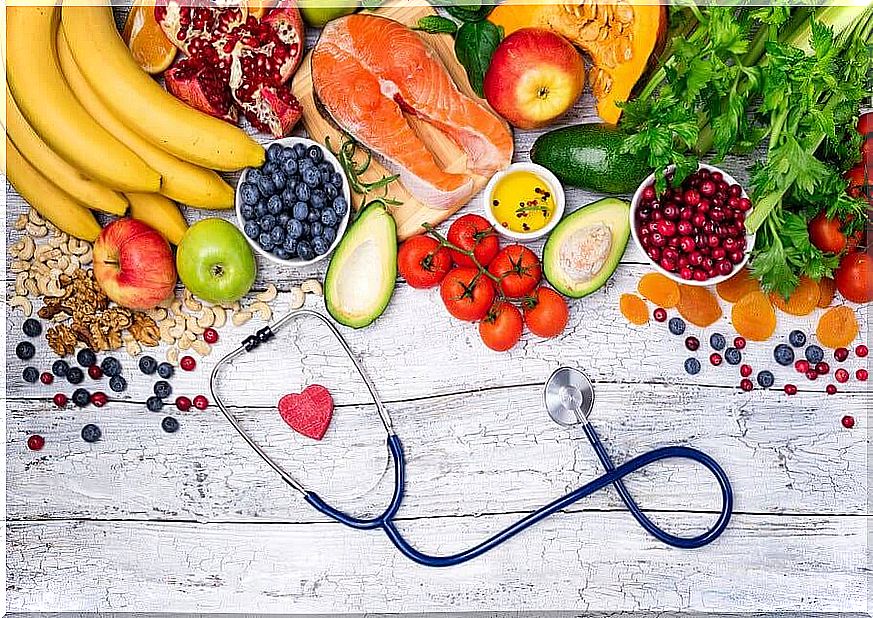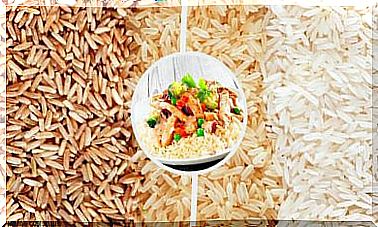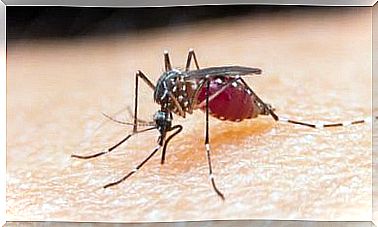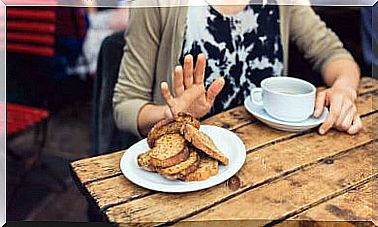Celiac Disease Diet: What Do You Need To Know?
The prevalence of celiac disease is 1%, with women more often affected than men. The basic treatment is a gluten-free diet.
The celiac diet is one of the most popular diets today. Unfortunately, this is not due to a heightened awareness of celiac disease, but rather because many believe that this diet is suitable for all people and even healthier.
Celiac disease patients suffer from an immunological intolerance to gluten from barley, wheat or rye. This intolerance triggers an inflammation of the intestinal mucosa when eating gluten. In some cases, depending on genetics, those affected may also be sensitive to oats.
Treatment consists of permanently avoiding gluten, as consumption can lead to diarrhea, fatty stools and abdominal pain. For this reason, it is important to adhere to a few guidelines that we will explain to you in this article.
What foods are allowed on a celiac diet?
Foods containing gluten
Gluten is a protein found in wheat, barley, rye, oats and derivatives. Therefore, on a celiac disease diet, all foods based on these types of grain must be avoided. The most common are:
- Bread and other products made from wheat, barley, rye, oats or triticale (a cross between wheat and rye)
- Pasta : soup noodles, macaroni, spaghetti, lasagna etc.
- Processed foods that contain flour : mashed potatoes from the pack, ready-made sauces, bag soups, etc.
- Cakes and pastries
- Wheat-based fermented drinks : beer, liqueur, etc.
- Starch, modified starch, potato starch
Foods that may contain gluten
These foods do not naturally contain gluten. However, since they could contain traces, they are only allowed if the manufacturer assures on the label that it does not contain this protein.
- gummy bear
- Fried or roasted dried fruits
- Nougat, marzipan and biscuits
- Creams in bags, spices, dressings
- Canned meat or fish
- Highly processed cheese : processed cheese, light cheese, portioned cheese, etc.
- Milk desserts : flan, pudding, flavored yogurt, etc.
- Flavored sweeteners : chocolate ice cream and vanilla ice cream.
Foods that do not contain gluten
- Milk and milk products : natural yoghurt, butter, cream, natural cheese, etc.
- Fish and fresh or frozen seafood without breading
- Fresh and frozen meat without breading: ham (at least 95% meat content), chicken or turkey breast, etc.
- Legumes or derivatives : lentils, chickpeas, beans, soy, etc.
- Coffee, tea, sugary drinks
- Oil, salt, wine vinegar, spices
- Untreated dried fruits
- fruit and vegetables
- Rice and corn
- Eggs

General Recommendations for a Celiac Diet
- Don’t buy groceries without labels. The manufacturer is obliged to state whether his products contain allergens.
- In bars and restaurants, ask how the dishes you order are prepared and prefer not to eat if this information cannot be provided.
- If you are on a celiac diet, the consumption of processed foods should be restricted.
- Some medicines can also contain gluten. It is therefore important to check with your doctor or pharmacist before taking it. You should also read the package insert carefully.
- Especially for patients who have only recently been diagnosed, it can be helpful to find out more from associations of celiac patients.
- Read the labels and avoid foods with the following ingredients: vegetable protein, malt, malt syrup, starch, semolina, fibers, flavors, yeast, etc.
Tips for a Celiac Disease Diet
In order to properly follow a celiac disease diet , it is important to follow some tips. From the right preparation of the food to the right cooking. Mistakes in preparation can contaminate the food and cause indigestion in the patient.
- Use different kitchen utensils when preparing gluten-free and gluten-free dishes at the same time.
- In addition, gluten-free foods should not be fried in oil in which foods containing gluten or breaded foods have been fried with flour.
- It is advisable to adapt the preparation of the dishes for the whole family as much as possible if only one family member suffers from gluten intolerance. This will prevent contamination from occurring during cooking.
It is extremely important to follow all the recommendations of the doctor from the beginning and not take any action without first consulting him.
Anyone who has not been diagnosed with celiac disease but wants to go on a celiac disease diet should know that, according to experts, it is not beneficial to avoid foods containing gluten if they can be well tolerated and digested, as over the course of the Time an intolerance can develop.
If in doubt, a doctor should always be consulted so that he can carry out appropriate tests.









